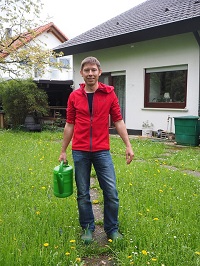Table of Contents
If you’re wondering why you need to clean your home workplace, this article will explain why – and have you (and me!) rushing to clean up.
With so many companies and staff embracing the work from home approach, it is more important than ever to keep home workplaces clean. Keyboards are a breeding ground for germs, especially as over 60% of employees have lunch and half of employees snack at their desks. Food crumbs, spilt drinks and dust can end upon, and between the keys. Keys get extra shiny from the oily residue on fingers and crumbs falling onto keys of you keyboard are notorious for harbouring germs.
Why you need to clean your home workplace
The home workplace has more bacteria than anywhere else in the home. The average keyboard has 3,543k germs per square inch which is 1.1 times more bacteria than you will find on your average toilet seat. Phones carry 1,600k germs per square inch which is more than a kitchen drain, which ‘only’ has 567k germs per square inch. With 1,370k bacteria per square inch, a computer mouse has 10 times more bacteria than a kitchen cloth with only 135k germs per square inch.
If you think that’s scary – and I do – consider this….
Poor hygiene, such as not washing your hands, also add to the dirtiness of keyboards and encourage the transmission of infectious germs. A survey found that 39% of employees do not wash their hands properly, with 47% of men and 34% of women not washing their hands after a bathroom visit. In addition, 89% of workers do not clean their desk while 38% will only do a ‘’quick clean’’. Meanwhile, 80% of infections are from surfaces which contributes to the high levels of sick leave. The lack of workplace hygiene causes 68% of sick leave with 95% for minor illnesses. The cost of sick leave is estimated to be upwards of £77.5 billion to the UK economy.
Who – in 2021 – does not wash their hands after a bathroom visit? Gross!
Viruses survive for longer on non-porous surfaces such as plastics and stainless steel. Although cold viruses have been shown to survive on surfaces for several days, their ability to cause infection reduces rapidly and they last for only 24 hours. Flu viruses can also survive for 24 hours. Pathogens like Hepatitis and MRSA that cause serious illnesses, can survive on hard surfaces for 42 days and 180 days, respectively. MRSA bacteria can last on surfaces for longer than Covid and Norovirus because they survive better without moisture.
How to Reduce Workplace Sickness
Workplace hygiene was shown to be one of the most effective ways to reduce sickness. It is easy to build home workplace cleaning into a daily routine and the cleaning techniques are easy. To clean the keyboard, dampen a cotton cloth into rubbing alcohol and clean the tops of the keyboard keys. Use a soft cloth to remove the last of the dust and polish the keyboard. A quick and easy way to sanitize your monitor is by moistening a clean microfiber cloth with rubbing alcohol. Then, wipe the dampened cloth in one direction and let the monitor air dry. Keeping your phone clean will help you significantly limit the spread of germs. Start by spraying a mild all-purpose cleaner onto a clean microfiber cloth and wipe away the device.
Infographic On Why You Need To Clean Your Home Workplace
TidyChoice’s infographic ‘’Why you need to clean your home workplace’’ presents top tips on how to keep your home workplace bacteria-free and prevent the spread of viruses. Sanitizing your desk, keyboard, computer mouse and phone at least once a day will help you keep germs in check and avoid illness. Bacteria need moisture and warmth to grow and wiping down your home workplace with a soft cloth dampened in rubbing alcohol will prevent the spread of infection.













